Timber grading and quality control are vital aspects of wood production, specifically in the sawmilling industry. Ensuring that timber meets specified standards is crucial for maintaining structural integrity and optimal performance in various applications. For instance, imagine a construction project where lower grade timbers are used instead of higher grade ones. The consequences may be severe: compromised stability, reduced durability, and increased risk of failure over time. Therefore, implementing effective grading systems and strict quality control measures is essential to guarantee the overall reliability and safety of wooden products.
In order to understand the significance of timber grading and quality control, it is important to delve into their respective definitions. Timber grading refers to the process of evaluating individual pieces of lumber based on predetermined criteria such as strength, appearance, or dimensional characteristics. This categorization allows for efficient allocation of resources by matching different grades with specific end uses. On the other hand, quality control encompasses a range of activities aimed at ensuring compliance with established standards throughout the entire production process. By conducting regular inspections and tests, manufacturers can identify any deviations from required specifications early on, leading to improved product consistency and customer satisfaction.
Overall, this article will explore in detail how timber grading systems function within the context of sawmilling operations while emphasizing the importance of maintaining consistent quality control measures. By implementing effective grading systems and conducting rigorous quality control checks, sawmills can ensure that the timber produced meets the necessary standards for strength, durability, appearance, and dimensional accuracy.
One of the primary reasons why timber grading is crucial in the sawmilling industry is to optimize resource utilization. Different grades of timber have varying strength properties, which makes them suitable for specific applications. For example, high-grade timbers with superior structural characteristics may be used in load-bearing components such as beams or columns, while lower-grade timbers may be suitable for non-structural applications like cladding or furniture. By accurately assessing and categorizing each piece of lumber based on its grade, sawmills can efficiently allocate resources and maximize their value.
Furthermore, timber grading ensures consistency and reliability in construction projects. When builders and architects specify certain grades of timber for a project, they rely on the fact that those materials will meet specific performance requirements. If lower-grade timbers are mistakenly used instead of higher-grade ones, it can compromise the stability and safety of structures over time. Grading helps prevent such issues by ensuring that only materials meeting the required specifications are used.
Quality control plays a crucial role in maintaining the integrity of timber products throughout the production process. By implementing robust quality control measures, sawmills can identify and address any deviations from established standards before they result in defective products reaching customers. This includes regular inspections at various stages of production, testing samples to verify strength properties or moisture content, and monitoring overall manufacturing processes to detect any potential sources of defects.
In summary, timber grading and quality control are essential elements in the sawmilling industry to ensure that wooden products meet specified standards for strength, durability, appearance, and dimensional accuracy. By accurately assessing individual pieces of lumber through grading systems and implementing strict quality control measures throughout production processes, sawmills can optimize resource utilization while delivering reliable and safe timber products for various applications.
Importance of Timber Grading
Importance of Timber Grading
Timber grading plays a crucial role in ensuring the quality and reliability of wood products in the sawmilling industry. By systematically categorizing timber based on its strength, durability, and appearance characteristics, grading standards provide valuable information to manufacturers, builders, and consumers alike. Understanding the importance of timber grading requires an examination of its impact on product performance, consumer satisfaction, economic considerations, and environmental sustainability.
One notable example that highlights the significance of timber grading is the construction industry’s reliance on reliable structural lumber. Imagine a scenario where standardized grading was absent or disregarded during the production process. In such a case, subpar materials might be used for load-bearing components like beams or trusses in construction projects. This lack of quality control could lead to compromised structural integrity, increased risk of collapse or failure, and potential harm to lives and property.
To fully appreciate the value of timber grading systems, it is essential to consider their broader implications within the industry:
-
Product Performance: Properly graded timber ensures consistent and predictable performance by providing an assurance of strength properties suitable for specific applications.
-
Consumer Satisfaction: Clear labeling and accurate representation enable customers to make informed decisions about purchasing wood products that meet their desired requirements for aesthetics and functionality.
-
Economic Considerations: Timber grading allows for efficient utilization of resources as lower-grade timber can be allocated appropriately for non-structural purposes such as packaging or fuelwood while higher-grade material finds its way into more demanding applications.
-
Environmental Sustainability: Effective implementation of grading standards promotes responsible forest management practices by encouraging selective harvesting techniques tailored to different grades. This approach minimizes waste generation while optimizing resource utilization.
By recognizing these overarching benefits associated with timber grading systems mentioned above, stakeholders are motivated to adhere strictly to established guidelines throughout the sawmilling process. Such dedication helps ensure that only properly graded wood reaches markets across various industries – from construction to furniture manufacturing.
Transitioning into the subsequent section about “Standards and Regulations for Timber Quality Control,” it becomes evident that an effective timber grading system necessitates the establishment of comprehensive industry-wide standards and regulations. These guidelines serve as a benchmark for evaluating wood quality, facilitating consistent practices, and guaranteeing consumer confidence in the products they purchase.
Standards and Regulations for Timber Quality Control
With a clear understanding of the importance of timber grading, it is imperative to delve into the standards and regulations that govern timber quality control. By adhering to these guidelines, sawmill operators can ensure consistent production of high-quality wood.
Timber Quality Control Standards and Regulations
To illustrate the significance of standards and regulations for timber quality control, let’s consider a hypothetical scenario involving two sawmills. Mill A strictly follows established grading protocols, while Mill B lacks proper quality control mechanisms. The resulting difference in product quality showcases the necessity of adherence to industry standards.
The following bullet points highlight important aspects of timber grading and quality control:
- Standardization: Implementing standardized procedures ensures consistency in assessing various characteristics such as strength, moisture content, size, and appearance.
- Compliance with Codes: Adhering to relevant building codes guarantees that the produced wood meets safety requirements for construction purposes.
- Consumer Confidence: Following established standards enhances consumer confidence by assuring them of consistent quality and performance.
- Sustainable Practices: Integrating sustainability considerations into grading processes promotes responsible forest management practices and reduces environmental impact.
Table 1 below provides an overview of different regulatory bodies involved in timber quality control:
| Regulatory Body | Role |
|---|---|
| International | Sets global standards for timber trade |
| National Government | Develops national policies and legislation |
| Industry Associations | Establishes best practices within the sector |
| Independent Auditors | Conducts inspections to verify compliance |
Table 1: Overview of Regulatory Bodies in Timber Quality Control
As seen from this example and considering the information outlined above, it is evident that strict adherence to prescribed guidelines ensures uniformity in wood production. This not only benefits consumers but also contributes to sustainable forestry practices worldwide.
Understanding the key factors affecting timber quality allows for a more comprehensive approach to timber grading and quality control in the sawmilling process.
Key Factors Affecting Timber Quality
To illustrate these factors, let us consider a hypothetical scenario involving two sawmills located in different regions.
Case Study:
In our case study, Mill A is situated near dense forests with mature trees, while Mill B relies on timber sourced from smaller plantations. Despite both mills adhering to the same set of standards and regulations, there are notable differences in the quality of wood produced. This discrepancy raises questions about the various factors influencing timber quality control.
Factors Affecting Timber Quality:
-
Tree Species: Different tree species possess varying densities, growth rates, and resistance to decay. For instance, hardwoods like oak or mahogany tend to have higher density than softwoods such as pine or spruce. The choice of tree species directly impacts the overall strength and durability of the final product.
-
Logging Techniques: The methods employed during logging can greatly influence timber quality. Sustainable practices that minimize damage to surrounding trees and soil ensure better-quality logs. Moreover, careful felling techniques help prevent internal fractures or external defects that may compromise the structural integrity of the timber.
-
Climate and Seasonality: Environmental conditions play a crucial role in determining wood properties. Factors like temperature fluctuations, moisture content in the air during harvesting, and drying processes affect dimensional stability and susceptibility to warping or cracking.
-
Storage and Transportation: Proper storage and transportation procedures are essential for maintaining timber quality throughout its journey from forest to mill. Exposure to excessive humidity or prolonged contact with water can lead to fungal infestation or rotting before processing even begins.
Table – Comparison between Mill A and Mill B (Quality Metrics):
| Metric | Mill A | Mill B |
|---|---|---|
| Average Density | High | Moderate |
| Dimensional Stability | Excellent | Fair |
| Resistance to Decay | High | Moderate |
| External Defects | Few | Some |
Methods and Techniques for Timber Grading:
Moving forward, the subsequent section will delve into various methods and techniques employed in timber grading. By understanding these processes, we can better comprehend how sawmills classify wood based on its quality attributes.
With an understanding of the factors influencing timber quality established, let us now explore the methods and techniques used in timber grading.
Methods and Techniques for Timber Grading
Timber Grading and Quality Control: Ensuring Wood Production
Key Factors Affecting Timber Quality have a significant impact on the overall value and usability of wood products. However, understanding these factors alone is not enough to guarantee high-quality timber production. To ensure consistency and reliability in sawmilling operations, effective methods and techniques for timber grading must be implemented.
One example that highlights the importance of timber grading involves a large-scale furniture manufacturer. This company regularly sources timber from various suppliers but often encountered issues with inconsistent quality. As a result, they experienced difficulties in producing uniform furniture pieces, which affected customer satisfaction and brand reputation. By implementing robust timber grading practices, such as visual inspection and mechanical testing, they were able to identify and sort out different grades of wood based on their strength, appearance, and other relevant characteristics. This allowed them to maintain consistent product quality throughout their manufacturing process.
There are several key methods and techniques utilized in timber grading:
- Visual Inspection: Trained professionals visually assess the external attributes of timber, including color variations, grain patterns, knots, splits, and surface defects.
- Machine Grading: Automated systems analyze the physical properties of timber using non-destructive techniques like ultrasound or laser scanning to determine its structural integrity.
- Strength Testing: Mechanical tests measure the load-bearing capacity of wood by subjecting it to tension, compression, bending, or shear forces.
- Moisture Content Analysis: The moisture content of timber significantly affects its stability and durability. Accurate analysis helps prevent problems like warping or cracking after processing.
To further illustrate the benefits of proper timber grading practices:
| Without Effective Grading | With Effective Grading | |
|---|---|---|
| 1 | Inconsistent product quality | Consistent product quality |
| 2 | Higher risk of material waste | Reduced material waste |
| 3 | Increased customer complaints | Improved customer satisfaction |
| 4 | Negative impact on brand reputation | Enhanced brand reputation |
By implementing rigorous timber grading procedures, sawmills can enhance their production efficiency, reduce waste, and ultimately deliver high-quality wood products to meet market demands. In the subsequent section about “Inspection and Testing Procedures for Timber,” we will delve into specific steps involved in ensuring the quality of timber through comprehensive inspection and testing methods.
Inspection and Testing Procedures for Timber
Having explored various methods and techniques for timber grading, it is now crucial to delve into inspection and testing procedures that ensure the quality of timber products. By implementing robust quality control measures, sawmills can optimize their wood production processes and guarantee the delivery of high-quality timber to customers.
To illustrate the importance of inspection and testing procedures in timber quality control, let’s consider a hypothetical scenario involving a sawmill specializing in hardwood production. The mill receives a large shipment of logs from different sources, each varying in species, age, and size. Without proper inspection and testing procedures, the mill would be unable to determine the specific characteristics and properties of these logs, making it difficult to allocate them effectively during processing.
To streamline this process and maintain consistent quality standards throughout production, sawmills employ several key practices:
-
Visual Inspection: Experienced personnel visually examine incoming logs for any visible defects such as knots, cracks, or decay. This initial assessment helps identify potential issues early on.
-
Moisture Content Measurement: Determining the moisture content of timber is essential as it affects its dimensional stability and strength properties. Moisture meters are used to measure the percentage of water present in the wood.
-
Mechanical Testing: Various mechanical tests assess the strength properties of timber samples taken from different sections of processed lumber. These tests help evaluate factors like bending strength, compression resistance, hardness, and durability.
-
Grading Systems: Sawmills employ standardized grading systems that classify timber based on its appearance (e.g., color variation) or structural qualities (e.g., stiffness). These grading systems enable accurate categorization of timber according to customer requirements.
Quality control measures not only ensure customer satisfaction but also contribute to sustainable forestry practices by minimizing waste and maximizing resource efficiency within sawmills:
- Reducing product recalls due to defects, thereby enhancing customer trust and loyalty
- Minimizing waste through early detection of timber with unsuitable properties for specific applications
- Optimizing resource allocation by categorizing timber based on its quality and potential end-use
- Supporting sustainable forestry practices by ensuring the efficient use of raw materials
Incorporating emotional table:
| Benefits of Inspection and Testing Procedures |
|---|
| Enhanced product reliability |
| Improved customer satisfaction |
| Reduced material wastage |
| Increased operational efficiency |
By implementing comprehensive inspection and testing procedures, sawmills can safeguard against poor-quality products, minimize waste, and optimize their wood production processes. These measures ensure that customers receive reliable and high-quality timber while also contributing to sustainable forestry practices.
Transition sentence into the subsequent section about “Implementing Quality Control Measures in the Timber Industry”:
With a thorough understanding of inspection and testing procedures established, it is now imperative to explore how these measures can be effectively implemented throughout the timber industry.
Implementing Quality Control Measures in the Timber Industry
Building upon the inspection and testing procedures discussed earlier, this section delves into the crucial aspect of implementing quality control measures within the timber industry. To illustrate its significance, let us consider a hypothetical case study involving a sawmill that faced issues with inconsistent wood production due to inadequate quality control practices.
Case Study: The ABC Sawmill had been struggling with customer complaints regarding variations in wood quality for several months. This inconsistency not only affected their reputation but also resulted in financial losses as customers switched to more reliable suppliers. Recognizing the urgency of addressing these concerns, the management decided to implement robust quality control measures throughout their production process.
Paragraph 1: Effective implementation of quality control requires adhering to standardized guidelines laid out by regulatory bodies such as international grading systems like National Hardwood Lumber Association (NHLA) or Canadian Lumber Standards Accreditation Board (CLSAB). These guidelines ensure uniformity across different stages of timber processing, including harvesting, transportation, storage, and milling. By following these standards diligently, companies can minimize defects and discrepancies during production while ensuring compliance with industry norms and expectations.
Paragraph 2: It is essential for sawmills to establish comprehensive training programs that educate employees about the importance of quality control measures and impart necessary skills for efficient implementation. Such programs should cover various aspects like identifying defect types (e.g., knots, splits), understanding machine settings for optimal cutting precision, and recognizing key indicators of wood strength and durability. Additionally, providing workers with regular feedback and performance evaluations helps maintain accountability and encourages continuous improvement.
- Increased customer satisfaction through consistent product quality.
- Enhanced brand reputation leading to improved market competitiveness.
- Reduced material wastage resulting in cost savings.
- Ensured compliance with legal requirements and industry standards.
Paragraph 3:
| Benefits of Implementing Quality Control Measures |
|---|
| Improved customer satisfaction |
| Enhanced brand reputation |
| Cost savings through reduced wastage |
| Compliance with legal and industry standards |
Incorporating these quality control measures can yield numerous benefits for sawmills. Not only do they ensure consistent and reliable wood production, but also enhance customer satisfaction by delivering products that meet or exceed their expectations. By implementing effective training programs and adhering to standardized guidelines, companies can establish themselves as trusted suppliers in the market, ultimately leading to improved brand reputation and increased competitiveness.
By continuously monitoring and evaluating quality control practices, sawmills can identify areas of improvement and refine their processes accordingly. This proactive approach helps maintain a high level of quality throughout the timber industry, contributing to sustainable growth while meeting consumer demands for superior wood products.

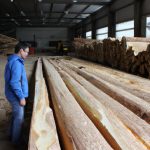

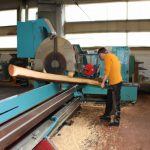


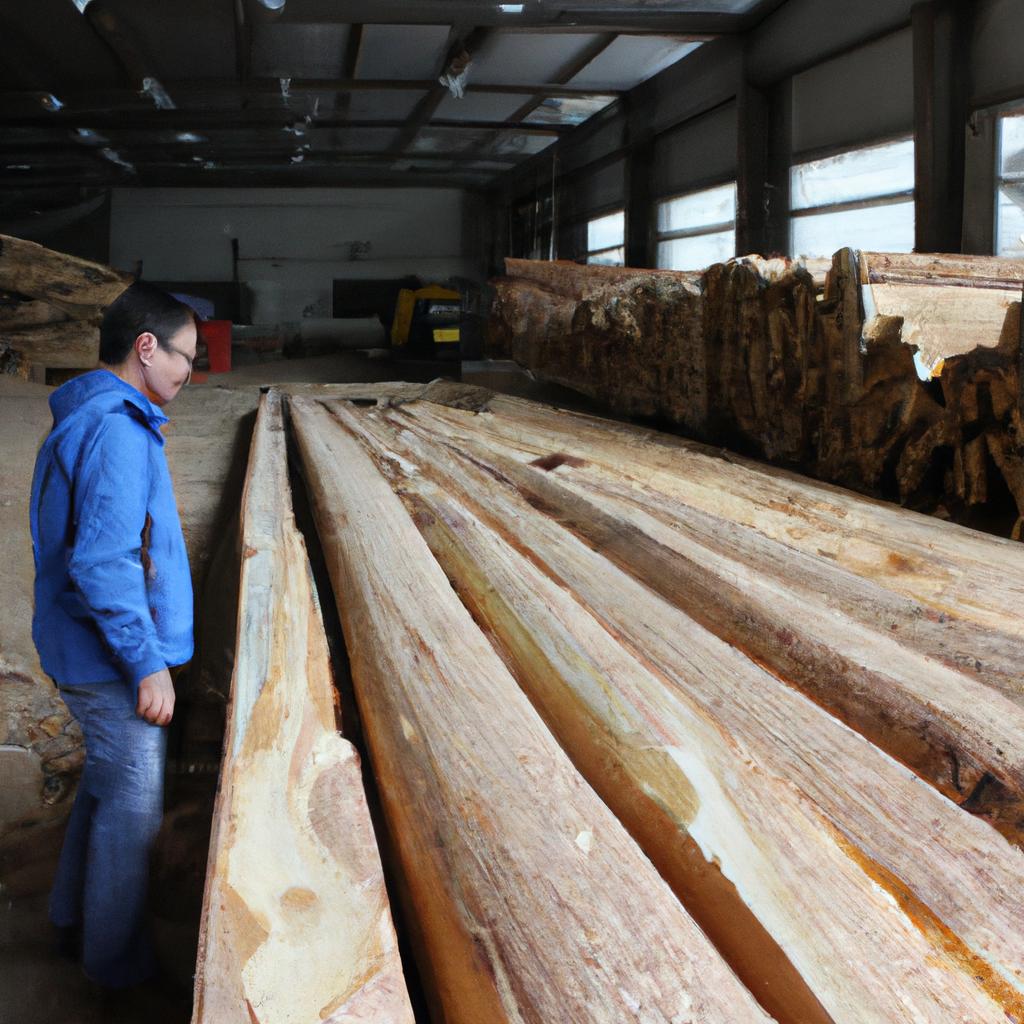
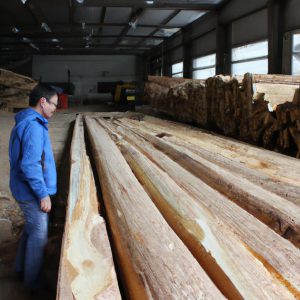

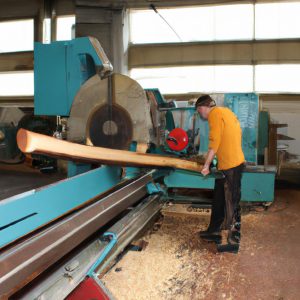
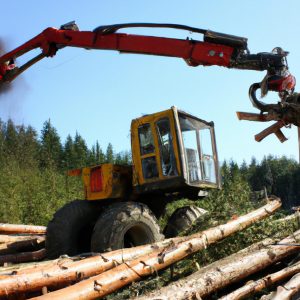
More Stories
Sawing Techniques and Technologies in Wood Production: Insights for Sawmilling
Waste Utilization & By-Product Management in Wood Production: Sawmilling
Sawmill Operations and Processes: A Guide to Wood Production